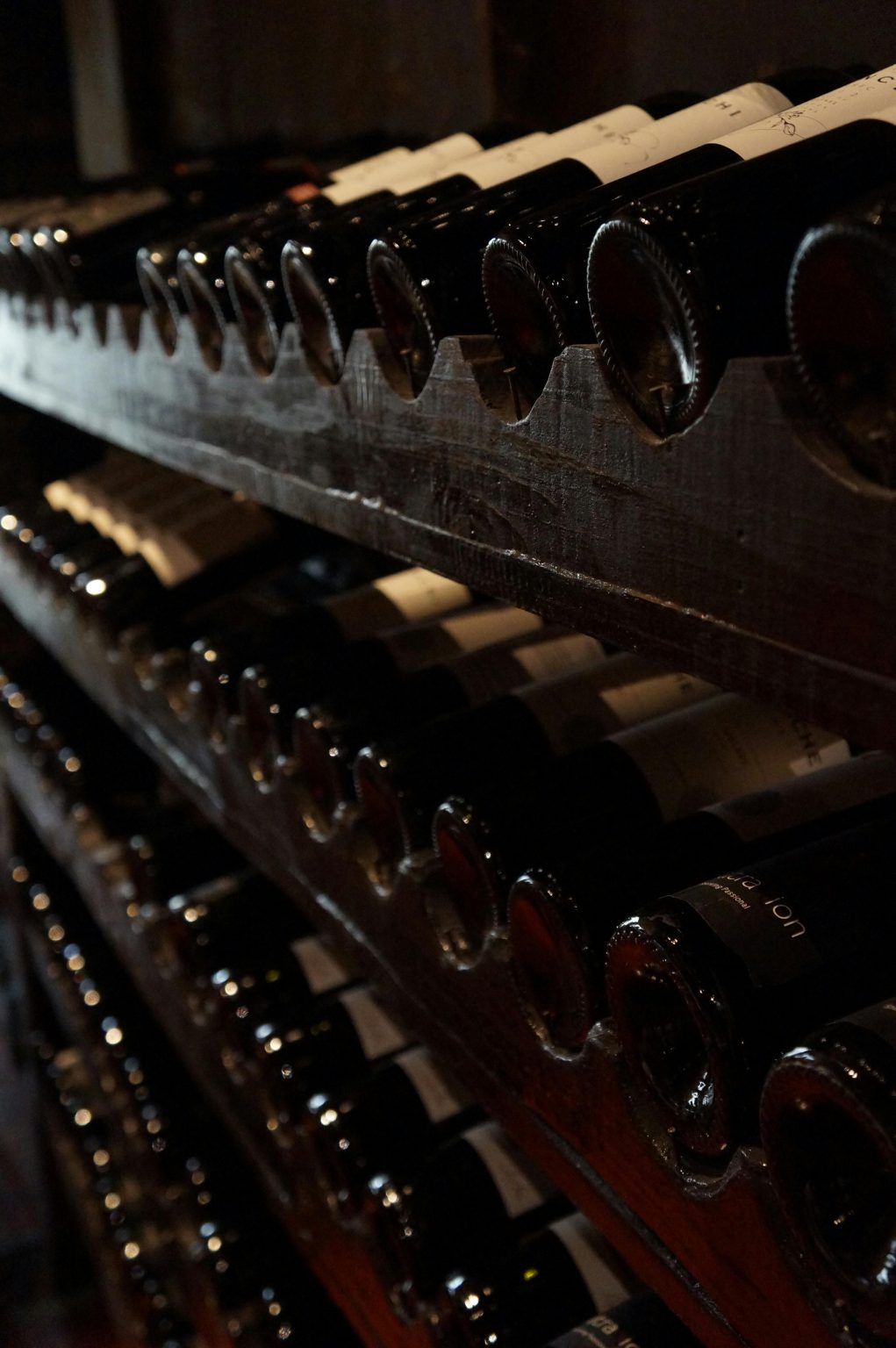Regardless of whether you are a pro collector or just beginning to build your wine collection, selecting the best red wines is important to ensure that all of your selections age gracefully with time. Every vintage has something special to offer. From glaring Cabernets to elegant Pinot Noirs, knowing which bottles are worth investing in can improve the experience of your future dinners as well as your understanding of wine. In this guide, we will uncork the best red wines to cellar for this year. Wines that are guaranteed to bring remarkable aging potential along with so much more.
Why You Should Start a Wine Cellar
To build a wine cellar is to go beyond just organizing a selection of bottles. It requires building a journey in anticipation of what each bottle holds underneath the collider of experiences they are yet to go through. A cellar that is well stocked transforms wine into an experience, where each bottle waiting becomes a metonym for biding time in hope of an exquisite purpose decades in the future. From intimate dinners and celebratory toasts to hailing unprecedented giveaways, unlocking a wine cellar is nothing short of prestige for a wine connoisseur.
Long-Term Enjoyment and Aging Potential
Elevating wine experiences requires years in the making and progressive storage, especially for red wine stocks. Opening a bottle set decades ahead of the current date shortens complexity into just simplicity. That said, the broad integration of various wine connoisseurs can burst into make a barrel-worth experience of sophisticated enjoyment.
Wine as a Personal Investment
From appreciating fine wine to collecting it, your cellar can serve as a portfolio of liquid investments. With some foresight, certain wines can offer vintage or modern wines that serve as a charming centerpiece and an unforgettable conversation starter. A saved bottle for a certain milestone, rare aged vintages saved and shared with family and friends, celebrate milestones that no longer exist in stores, with the story becoming a treasure chest of taste and time.
Planning for Future Gatherings and Gifts
The perfect wine cellar should do more than just be a decoration, it should serve a practical purpose. It should be able to speak, for instance, a perfectly aged bottle saved for a dinner party or holiday celebration. At a moment’s notice, transform into a heartfelt gift. When the fine wine has been taken care of, it certainly becomes unforgettable.
What Makes a Red Wine Worth Cellaring?
Some red wines require more attention than others, especially when it comes to aging. When done correctly, aging wines results in balance, structure, and the ability to evolve over time, which is crucial for preserving wine cellar value. Being able to identify and categorize red wines helps decipher the true meaning behind “time’s rewards,” beauty, archetype, and sophistication.
Tannins and Structure
Age-worthy red wine relies heavily on tannins for added backbone. The firmness and integration of a wine’s tannin will alter as time goes by, considerably improving its value. As time passes, wine softens alongside gaining sophistication and nuance. Some varietals famous for strong structural foundations are Syrah, Nebbiolo, and the world-renowned Cabernet Sauvignon.
Acidity and Balance
“Freshness” in wines translates to an ability to be aged without the risk of being flat or oxidized. Any vibrant, balanced red will do the trick as those values will be maintained alongside identity. With the right amount of harmony in acids and tannins, expect an endless transformation of added flavor, unlike anything that can be experienced in its youth.
Grape Variety and Aging Potential
Aging some grape varieties is easier than others since some are naturally better suited than others. For instance, Bordeaux blends, Barolo and Brunello di Montalcino, and Pinot Noir from select producers are classic reds that have long been favorites for cellaring. Grown in the right conditions and crafted by skilled winemakers, these grapes offer the complexity and longevity required to age magnificently over the years, or even decades.
Storage Conditions That Matter
Even the best bottle won’t be able to reach its potential if it’s improperly stored. Best cellaring conditions are a dark area with near 55°F or 13°C, moderate levels of humidity, and minimal vibration. Chemicals such as oxygen will slowly react with the wine, which is a part of aging; however, with proper storage, the reactions are mitigated to expand more slowly. Whether it is a traditional cellar or a dedicated cooler, the environment must be tailored to securely enhance the investment.
Top Red Wines That Deserve a Spot in Your Cellar
The wines below are known for how beautifully they evolve with time, in addition to their flavor. Each varietal, from bold to elegant red wines, brings something unique to your cellar and future sipping experiences.
Pinot Noir – Elegant, Earthy, and Exceptionally Age-Worthy
For long-term aging, one of the wines that stands out is Pinot Noir. The balance and richness are something that makes them the most sought-after in this category. Even though its body is lighter compared to other red wines, it is rich in acidity and has delicate tannins, which gives it the right structure, making it beautiful over time. When aged, Pinot Noir relinquishes its youthful fruitiness and captures deeper earthy notes that include thick forest floor, dried herbs, and mushrooms, which is rugged, making the wine richly nuanced year on year.
Where to Find Quality Pinot Noir Online
In Canada’s Niagara Peninsula, Burgundy, and Oregon’s Willamette Valley, one can find Pinot Noir from cool climate regions, making it perfect for aging. Those searching for a trustworthy Canadian winery should explore this curated Pinot Noir Wines Collection.
Cabernet Sauvignon – The King of Aging
Cabernet Sauvignon is the unquestionable king of the wine cellar. It is arguably the finest among wines as the depth of its profile, full-bodied characteristics, robust tannins, and the immensely high concentration of dark fruits coupled together make this type of wine last for decades. Age-worthy Cabernets softly reveal cassis, cedar, tobacco, and spice over the years. Collectors prize world-class examples produced in Napa Valley, British Columbia’s Okanagan Valley, and Bordeaux’s Left Bank. If you’re a novice wine collector, this varietal will serve as the perfect addition to your cornerstone collection.
Merlot – Smooth, Versatile, and Underrated
Merlot is an often-overlooked gem that deserves more attention in a cellar. It is known to have an approachable style with a rich yet meek plum-like depth and smoothness. While being a cousin of the more robust wine Cabernet, the blending of these two in regions like Bordeaux’s Right Bank enables Merlot to age surprisingly well. Over time, Merlot’s complexity grows and so do its notes, including leather, herbs, and dried fruit, while still being smooth as ever. This wine serves better for special gatherings or mid-term enjoyment. It offers a unique twist on the notion of good wine.
Syrah/Shiraz – Bold Flavors and a Long Life
If you’re a fan of deep, rich, spicy reds, then Syrah or Shiraz, as it is known in Australia, is a dazzling prospect for your cellar. Its characteristic notes of black pepper and blackberry, alongside smoky undertones, Syrah wines increase in value with age, developing a savory depth and silky texture. Wines from the northern Rhone region of France, Australia’s Barossa Valley, and even Washington State are known for gracefully aging from 10 to 20 years. South France has an extensive wine collection that exhibits bold structure, which, when paired with layered intensity, makes it stand out.
Malbec – A Bold Choice with Cellar Potential
This luxurious wine may not be famed for high-aging, but its darker fruits, cacao, and violet aroma give supple and elegant undertones that steep in the cellar, creating a masterpiece. The huge shifts in Argentinian Malbecs, especially those from high-altitude Mendoza regions, give coarse time around 5-15 years of age, slowly transforming into a plush and expressive red wine perfect for special occasions.
Tips for Building and Managing Your Wine Cellar
Creating a wine cellar doesn’t require an expensive initial purchase or a vintage oak rack-lined basement. A bit of planning and the right mindset can help construct a meaningful collection that grows along with your personal tastes and lifestyle. Here are a few tips that will help you get started and maintain order.
Start Small and Build Gradually
Starting a wine cellar does not require 200 bottles as a starting point. In fact, starting small aids in learning preferences and the evolution of different wines over time. Begin with young to drink ready reds, along with some age-worthy ones, and slowly add on as you discover new varietals, regions, and vintages. After some time, you will understand your palate better, as well as how certain wines age under your specific storage conditions.
Track Your Inventory (and Drink Windows!)
Tracking wine is relatively easy, but it could become difficult as it starts stacking up. Consider using a spreadsheet or an app, and writing down the bottles and their details along with the optimal drinking windows. With that information written down, you will know when to drink the wines and will avoid the disappointing experience of drinking a wine too late. Moreover, you can notice patterns based on what you have already collected and plan more strategically to fill the gaps.
Don’t Forget About Everyday Reds
Not every red wine you own has to be aged for 20 years before being able to be enjoyed. Keeping a few bottles of reds that are well-received over the span of 3-5 years allows you to have something amazing ready without looting your supply. Look for affordable and Canadian wines, like ‘Cabernet Franc’ from Ontario, ‘Tidal Bay’ blends from Nova Scotia, or the Meritage blends from British Columbia. These wines are not only reasonably priced, but they also taste amazing after being aged for a short period and add an element of sophistication to dinner on ordinary days.
Final Thoughts: Wine Today, Better Tomorrow
Constructing a proper wine cellar goes beyond collecting bottles; it is about preserving memories, crafting experiences, and allowing finer wines to achieve their peak potential. Traversing into the future, if you are aging a bold Cabernet Sauvignon for a likely celebration, you’re reaping a reward.
Collecting glasses of wine brings great joy. It is all the more satisfying to open a bottle when the time is perfect; when patience, effort, and time come together in flawless execution. A practical, well-built cellar is not simply a storage unit; it is a reflection of one’s appreciation and evolving taste for wine.
The journey is a vibrant one, so look at it from your perspective. Explore those varieties that ignite your passion, and let the cellar be a joyous monument showcasing that passion, such as a perfectly balanced Canadian Pinot Noir. Anticipation is what makes it more worthwhile, and the best wines are best savoured, not sipped on.



